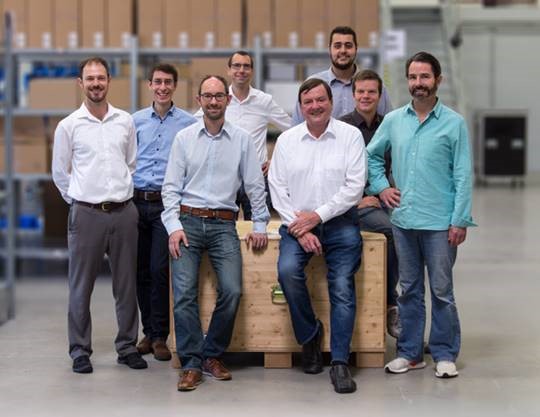Nanoscribe expands its worldwide presence

Nanoscribe GmbH is further expanding its sales and service activities on the American continent. The new subsidiary opened its location in the Boston area (USA) on 1 August 2019. The German manufacturer of 3D printers for microfabrication sees this step as an important element of its internationalization strategy.
Today, many top American universities already rely on Nanoscribe's 3D microfabrication technology, such as Harvard University and Boston University in Massachusetts, Stanford University and the California Institute of Technology in California. In addition to the steady expansion of relations with the science and research market, the company now also intends to push ahead with market penetration in the industrial environment, starting with the first pioneering customers. CEO Martin Hermatschweiler sees the US as a strong sales market with growth potential. "From Boston, we can now react even more flexibly to our customers' wishes and offer them the best possible support," says Hermatschweiler, who will lead the US subsidiary as General Manager.
Following the establishment of a subsidiary in China in 2018, the German high-tech company Nanoscribe is continuing its internationalization strategy with the opening of its US subsidiary. Numerous product prizes such as the Prism Award and most recently the Innovation Award of the LASER World of Photonics 2019 as well as various company awards underline the success story of the company founded in 2007 from the Karlsruhe Institute of Technology (KIT). With more than 70 employees, the world market and technology leader in the field of 3D microfabrication intends to increasingly focus on solutions for industrial manufacturing in the future.
In order to match this, Nanoscribe has recently added with Quantum X a completely new developed maskless lithography system to its portfolio. Quantum X is the first thoroughbred industrial device to benefit from patent-pending Two-Photon Grayscale Lithography (2GL) and has been specially designed for the production of challenging microoptical components. The 2GL additive manufacturing process combines the exceptional performance of grayscale lithography with the precision and flexibility of Nanoscribe's continuously evolving Two-Photon Polymerization (2PP). "With Quantum X, we provide users with a highly efficient and extremely precise manufacturing process that overcomes previous limitations in design freedom, precision, and throughput," explains Hermatschweiler.
This drastically shortens design iteration cycles for functional prototypes making the entire manufacturing process more time and cost-effective. Especially for the production of refractive and diffractive microoptical components, which are needed in the fields of augmented reality, sensor technology as well as for information and communication technology, these benefits are of particular interest. The additively produced microstructured surfaces are either used directly or integrated as masters into the process chain of a molding series production.



































